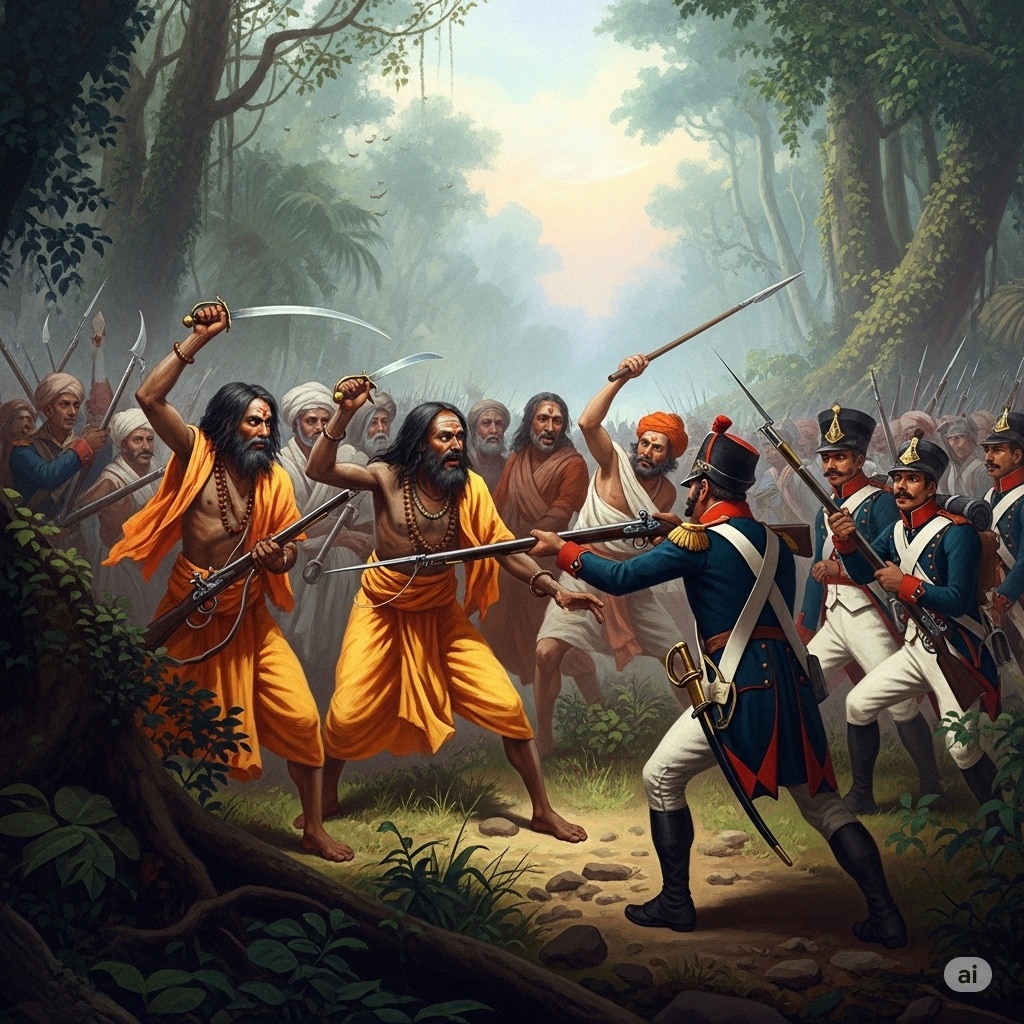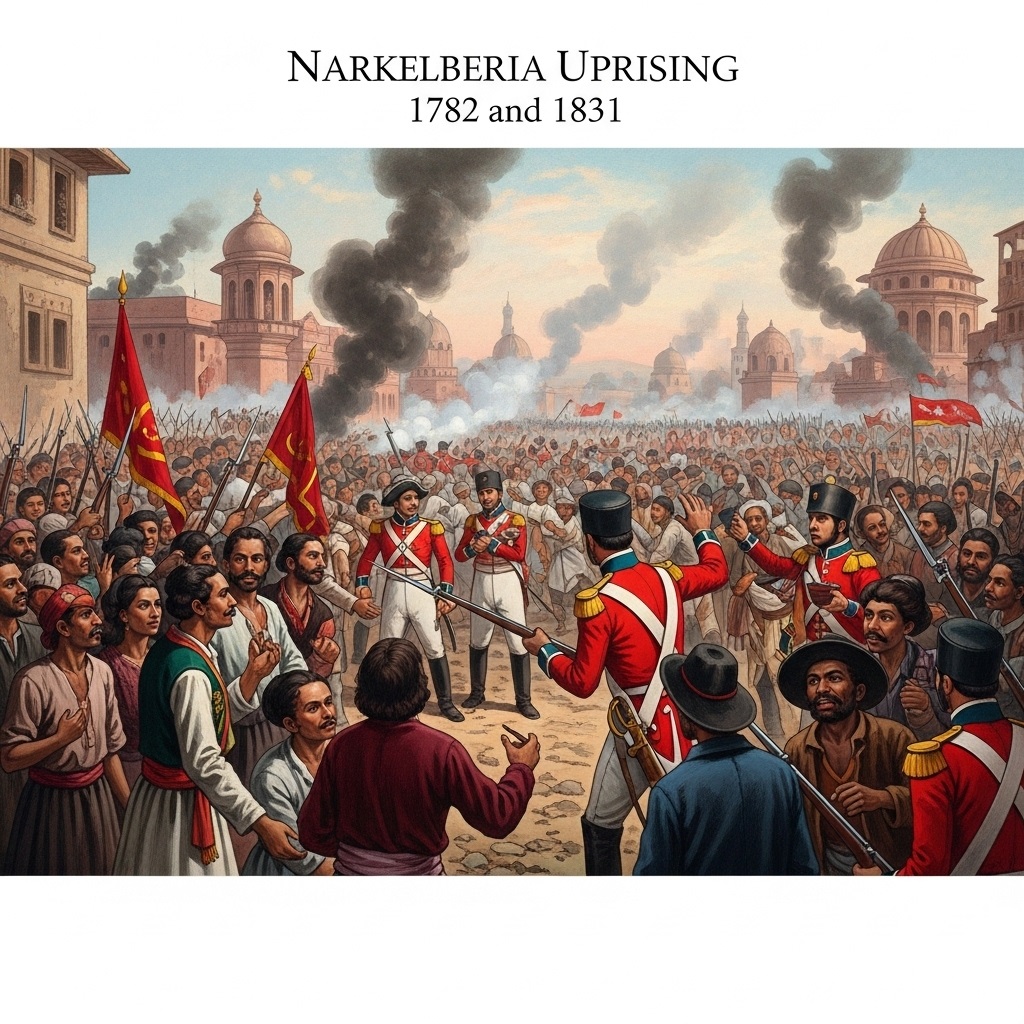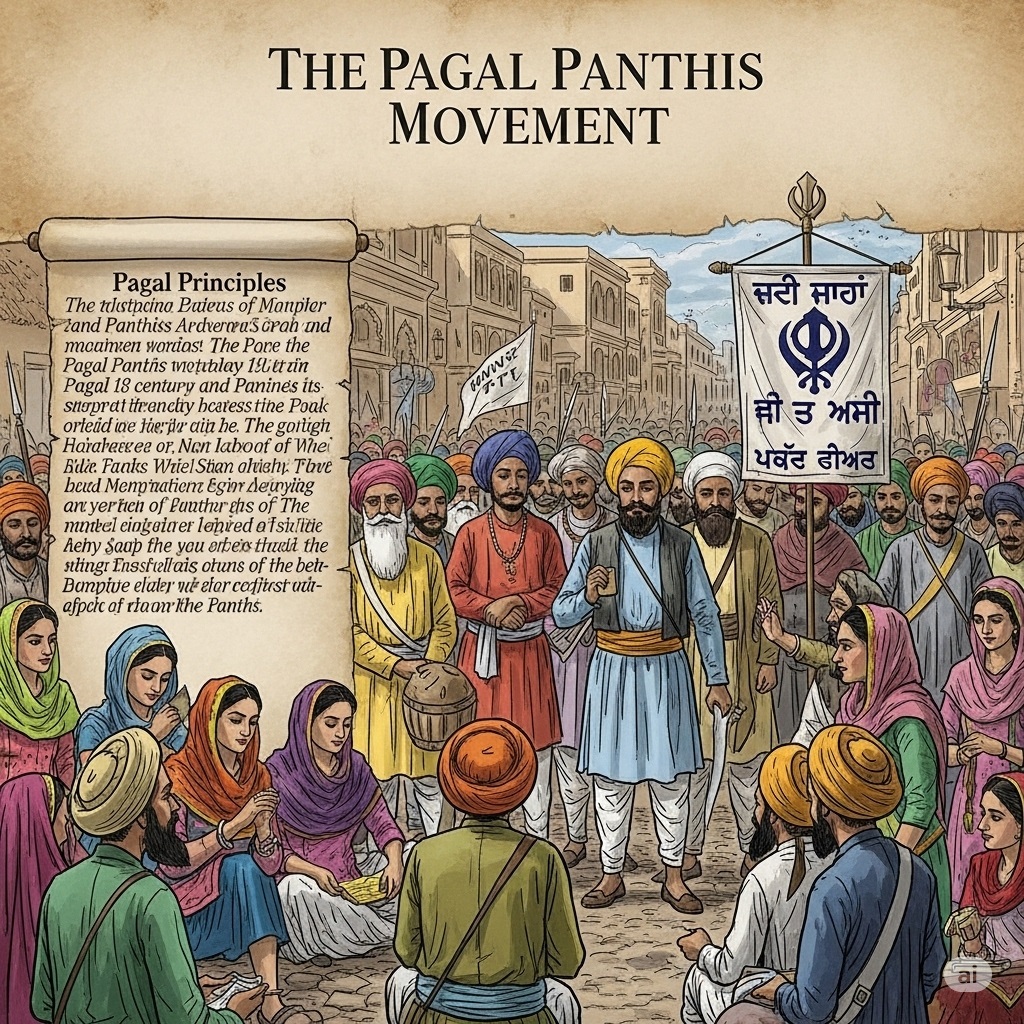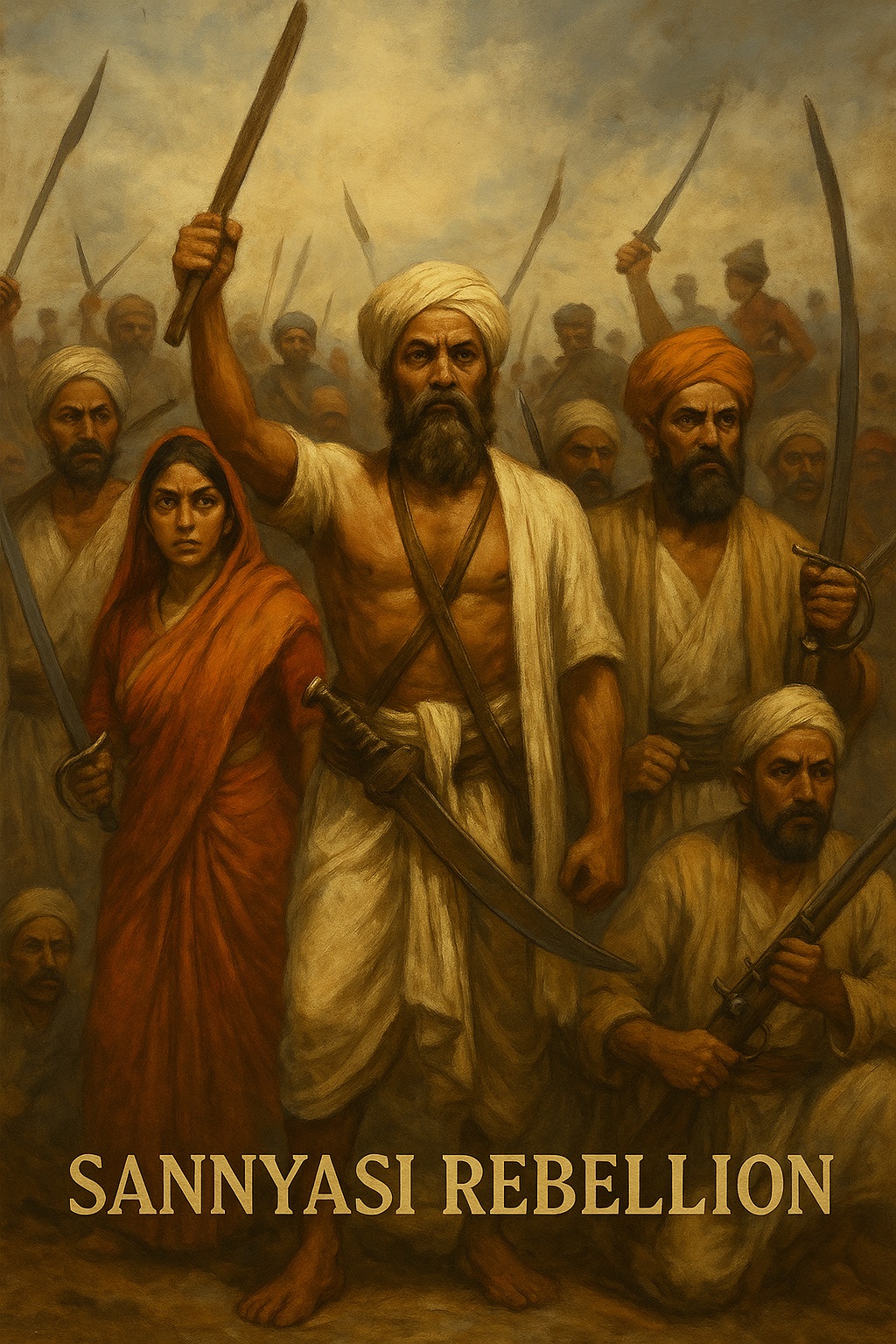🧭 Overview: Why Peasant Movements Happened
🔴 Trigger: British mercantilist policies → 📉 Agriculture degraded → ⚡ Commercialisation of farming
⚠️ Result: Increased taxes, land alienation, debt traps, famines → Widespread peasant unrest
| Factor | Explanation |
|---|---|
| Stagnation of Agriculture | No growth due to land crowding, handicraft ruin, & high revenue |
| Land Revenue Systems | 👑 Zamindari, Ryotwari, Mahalwari → Tenants squeezed for money |
| Indebtedness | Borrowed from 💰moneylenders at high interest, lost land |
| Commercialisation | Turned cultivators into landless labourers, sharecroppers |
| Evictions | Turned cultivators into landless laborers, sharecroppers |
| Depression & Famines | 1870s-90s → Starvation + revolt 🌾 |
| Forest Loss | For cash crops → Displaced tribals & peasants |
| Rent Increases | Unjust hikes, illegal exactions → 🔥 revolts |
🕰️ Timeline of Movements: Two Phases
| Phase | Timeframe | Features |
|---|---|---|
| 🟡 Phase 1 | Before 1857 | Local revolts, no national agenda, cultural leaders |
| 🔵 Phase 2 | After 1857 | Politicised, organised, national linkages (INC, CPI) |
🔸 Major Peasant Movements (Colour-coded Timeline)
🔶 Before 1857
| 🏴 Movement | 📍 Region | 🧑🏫 Leader(s) | 💥 Reason |
|---|---|---|---|
| Sanyasi Revolt (1763–1800) | Bengal | Majnu Shah Fakir, Devi Chaudhurani | Religious taxes + famine |
| Narkelberia (1782–1831) | Bengal | Titu Mir | Beard tax + indigo oppression |
| Pagal Panthis (1825–1833) | Bengal | Tipu Shah | Rent hikes & zamindari abuse |
🔷 After 1857
| 🔥 Movement | 📍 Region | 👥 Leaders | 🎯 Focus |
|---|---|---|---|
| Indigo Revolt (1859–60) | Bengal | Biswas Brothers | Forced indigo farming |
| Deccan Riots (1875) | Maharashtra | – | Moneylender exploitation |
| Pabna Movement (1873–85) | Bengal | Ishan Roy, Khodi Mulla | Anti-zamindari + no-rent union |
| Champaran (1917) | Bihar | Gandhiji | ‘Teen Kathia’ Indigo system |
| Kheda Satyagraha (1918) | Gujarat | Gandhiji | Revenue relief post-famine |
| Eka Movement (1921) | UP | Madari Pasi | High rents, forced labor |
| Mappila Rebellion (1921) | Kerala | – | Landlord oppression + communal |
| Bardoli Satyagraha (1928) | Gujarat | Sardar Patel | 22% tax hike resistance |
| AIKS Formation (1936) | All India | Sahajanand, N.G. Ranga | Tenant rights, zamindari end |
| Tebhaga (1946) | Bengal | Communist Party | 2/3 share to tillers |
| Telangana (1946–52) | AP | CPI, AMS | Guerrilla fight vs landlords & razakars |
Sanyasi Revolt (Around 1763–1800)
The Sanyasi rebellion took place between 1770 and 1780 AD in Bengal. The terrible famine in Bengal in 1770 AD caused this province to suffer from misery. On the other hand, the restrictions imposed on the pilgrimage made the Sanyasis upset with the British and led to their revolt against the company rule.
These Sanyasis were followers of Shankaracharya and were divided into various sects. The Sanyasis belonging to the ‘Giri’ sect rose in revolt against the company’s policies.
The Sanyasi very joined by farmers, evicted landlords, and disbanded soldiers. Majnu Shah Fakir was the leader of the revolt. The centre of revolt was Rangpur to Dhaka. The Sanyasis defeated a Company of sepoys and killed the commander. They captured some districts and started running a parallel government.

The Sanyasis started looting the British godowns and the standing crops and made stiff resistance to the company’s forces.
This rebellion continued till the end of the 18th century. The Governor-General Warren Hastings launched a military campaign against the Sanyasis. The mighty English power crushed the revolt.
Chirag Ali, Musa Shah, Bhawani Pathak and Debi Chaudhurani were important leaders of the revolt. Debi Chaudhurani‘s participation is an important feature as it shows the active participation of women in early resistance against the British.
The description of the Sanyasi rebellion can be found in Bankim Chandra Chatterjee’s famous book “Anand Math”, which is a semi-historical novel.
Narkelberia (1782–1831)
The Muslim tenants fought back against Hindu landlords who imposed a beard tax on Faraizis and British Indigo planters. The leader of the movement is Mir Nithar Ali (Titu Mir).
Initially is it was an armed peasant uprising against the British, the movement took on a religious dimension. It later merged into the Wahhabi movement.

The Narkelberia uprising is considered the first armed uprising by peasants against the British. The Narkelberia uprising was so strong that Lord William Benetick deployed a strong army in November 1831 to suppress the uprising.
Titu Mir, along with 50 other fellow peasants, were killed, and about 800 peasants were arrested.
Pagal Panthis, 1833
Pagal Panthis were a socio-religious group belonging to different religions, including tribals living around the Mymensingh region of Bengal, in present-day Bangladesh. This socio-religious group was founded by Karim Shah.
After the death of Karim Shah, this group was headed by Tipu Shah, son of Karim Shah. Pagal Panthis firmly believed that God made all equal and all have equal access to the resources.
Pagal Panthis became popular amongst the landless peasants and tribals of the region. The tribes of the region, Hodi, Garo, and Hajong tribes, also have the same philosophies, hence were attracted toward the teachings and preachings of the Pagal Panthis.
Muslims were against the Pagal Panthis. There were a large number of landless peasants in the region who were exploited by the local zamindars, local rulers with the backing of the British officers. Severe taxation was imposed on the region’s peasants.

Forcible collections and the usurpation of the property increased peasant discontentment and disorder. The Pagal Panthis sought to protect and defend peasants from the militia of the landlords and the company’s armed forces.
By the advice of Tipu Shah, the peasants stopped paying taxes. In 1833, Tipu Shah was arrested. However, this did not end the uprising of the Pagal Panthis, compelling the British to lower the tax rates and relax.
After Tipu Shah died in 1852, after his death, there was another wave of uprisings by Pagal Panthis and suppressed by the Company’s officers.
